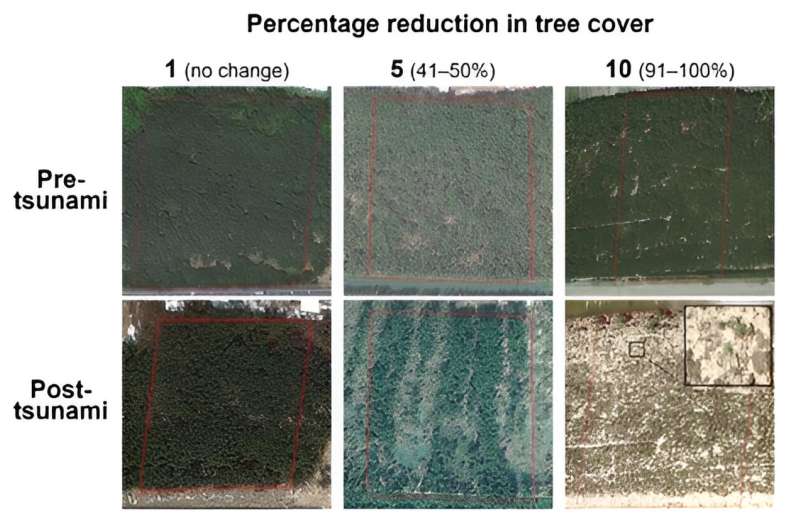This article has been reviewed according to Science X's editorial process and policies. Editors have highlighted the following attributes while ensuring the content's credibility:
fact-checked
trusted source
proofread
Mixed forests protect coastal areas from tsunami impacts better than monoculture forests, finds study

Coastal forests in Japan had predominantly been afforested with black pine (Pinus thunbergii), a shade-tolerant tree species that can withstand dry land ecosystems and harsh coastal environments.
This afforestation initiative, dating back to the Edo period (1603~1867), aimed to mitigate the deleterious effects of robust winds and sand blowing. Subsequent to the Great East Japan Earthquake in 2011, interest shifted to the potential protective effects of coastal forests in reducing the destructive power of tsunamis.
The Great East Japan Earthquake tsunami damaged a total of 2,800 hectares of coastal forest. While the damage was immense, the devastation provided an opportunity to study which coastal forests withstood the tsunami impact and why some forests fared better than others.
The forests can only mitigate tsunami effects if trees remain intact during the tsunami. Recently, scientists from Yokohama National University discovered that coastal forests that contained mixed tree species bore the tsunami forces better and with less damage than monoculture forests made up exclusively of black pine.
The research team published their findings in the journal Natural Hazards.
"Prior studies have established that coastal forests decrease the hydrodynamic forces exerted by tsunami on structures and alter inland debris dispersion based on the density and size structure of trees. However, limited attention has been devoted to exploring the role of species diversity in coastal forests."
"We revealed that mixed coastal forests with black pine exhibited a diminished vulnerability to tsunami impacts when contrasted with monoculture forests," said Yuki Iwachido, first author of the study paper and assistant professor at Yokohama National University.
The research team determined the effects of species diversity in coastal forests by analyzing satellite images and aerial photographs of coastal forests before and after the Great East Japan Earthquake tsunami on 11 March 2011. The degree of damage between forests that contained only black pine trees was compared to the damage experienced in mixed-species forests made up of black pine and other broad-leaved trees.
The researchers hypothesize that mixed forests are less susceptible to tsunami damage because the root morphologies of different tree species utilize more soil space and resources than single tree species. In theory, this could enhance aboveground tree growth and the overall stability of the mixed species forests. One limitation of the research was that the scientists couldn't compare their results to a monoculture of broad-leaved trees and, therefore, could not remove the impact of coniferous trees.
The study also found a benefit in complex tree planting arrangements compared to simple arrangements. Analysis of the visual impact of the Great East Japan Earthquake tsunami suggests that forests with complex spatial structures were more able to withstand tsunami forces.
The research team acknowledges that more studies are required to understand better the capacity of coastal forest tsunami protection and how to maximize its safeguarding effect.
"This study primarily focused on analyzing only damage patterns to coastal forests caused by tsunami impacts utilizing satellite images. There is a pressing need to elucidate the mechanisms by which mixed coastal forests alleviate the impacts of tsunamis," said Takehiro Sasaki, senior author of the study paper and a professor at Yokohama National University.
More information: Yuki Iwachido et al, Mixed coastal forests are less vulnerable to tsunami impacts than monoculture forests, Natural Hazards (2023). DOI: 10.1007/s11069-023-06248-8
Provided by Yokohama National University




















